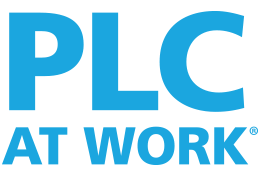DEMOGRAPHICS
Pasadena Independent School District is based in Pasadena, Texas, a city within the Greater Houston metropolitan area.
53,157 Students
- 67 Schools
- 86.3% Free and reduced lunch
- 28.9% Limited English proficient
- 10.4% Special education
PASADENA ISD'S CHALLENGE
Executive director of curriculum and instruction Marsha Jones was first exposed to the PLC at Work® process as a middle school principal. After being introduced to the work of Richard DuFour at an education conference, Jones read his book Learning by Doing and was immediately hooked.
“What Dr. DuFour said is us,” Jones recalled thinking. “This is where we need to be. This is the direction we need to go.”
The culture across the district was one that Dan Hoppie, executive director of curriculum and instruction, referred to as “siloed.” New teachers were handed the keys to their classrooms and then left to work largely in isolation.
School teams worked together on community-building activities like party planning and special events, but they lacked the focus on collaboration and shared goals that would guarantee success for all students.
IMPLEMENTATION
In the first year of their journey, Pasadena sent 235 school and district leaders to the PLC at Work® Institute in San Antonio with the goal of implementing PLCs and promoting collaboration districtwide.
“Each school was able to learn and collaborate together and then take that back to their campuses and begin the work,” said Jones. “That conference was a catalyst for districtwide change.”
From there, it was a matter of introducing more and more staff to the concept and creating a “unified vision of the powerful impact of PLCs.”
“This is the way I honestly think education really should be done.”
As a common language around PLCs developed across the district, focus began to shift away from simply getting through the curriculum each year and centered instead on ensuring that both students and teachers were continually learning and growing in the classroom. This shift, according to Hoppie, was significant and “a huge benefit” for Pasadena. It led to conversations about why students weren’t learning and how teachers could provide them with the additional time and support they needed to succeed.

Pasadena ISD staff celebrate their district’s distinction as an internationally recognized Model PLC at Work®.

PISD teachers collaborate for student success—no matter the distance.
RESULTS
Since beginning its PLC journey, Pasadena has shown significant gains in student achievement, which district staff educators attribute to the power of authentic collaboration and shared collective commitments. During the sixth year of PLC at Work® implementation at Pasadena, 95.6 percent of pre-K students demonstrated emergent literacy skills in writing, and 94.4 percent demonstrated proficiency in mathematics. From year three to year six, the percentage of students in grades 9–12 who achieved mastery in algebra rose from 75 to 90 percent. Pasadena also saw significant jumps in the percentage of students scoring a qualifying score (3–5) on the Advanced Placement exam in 10 of 14 subject areas.
In addition, Jones credited the district’s PLC work for helping Pasadena “weather the storm” of COVID-19. The support of collaborative teams, as well as the strong foundations established during the PLC implementation, gave teachers a source of stability during a time of uncertainty.
“The language and the culture in this district is all around collaborative teams and working through PLC,” Jones said. “It gives me goosebumps. It truly does. We’ve come so far.”
Percentage of students in grades
9–12 who achieved mastery in algebra
In three years, the percentage of students in grades 9–12 who achieved mastery in algebra rose 15%
WHY PLC AT WORK®?
Professional learning communities (PLCs) are schools that empower educators to work collaboratively in recurring cycles of collective inquiry and action research to achieve better results for the students they serve.


